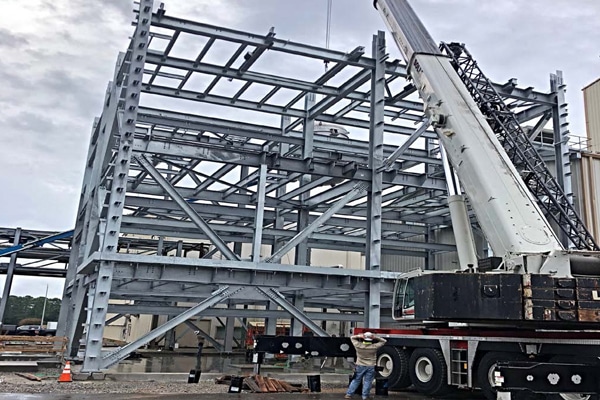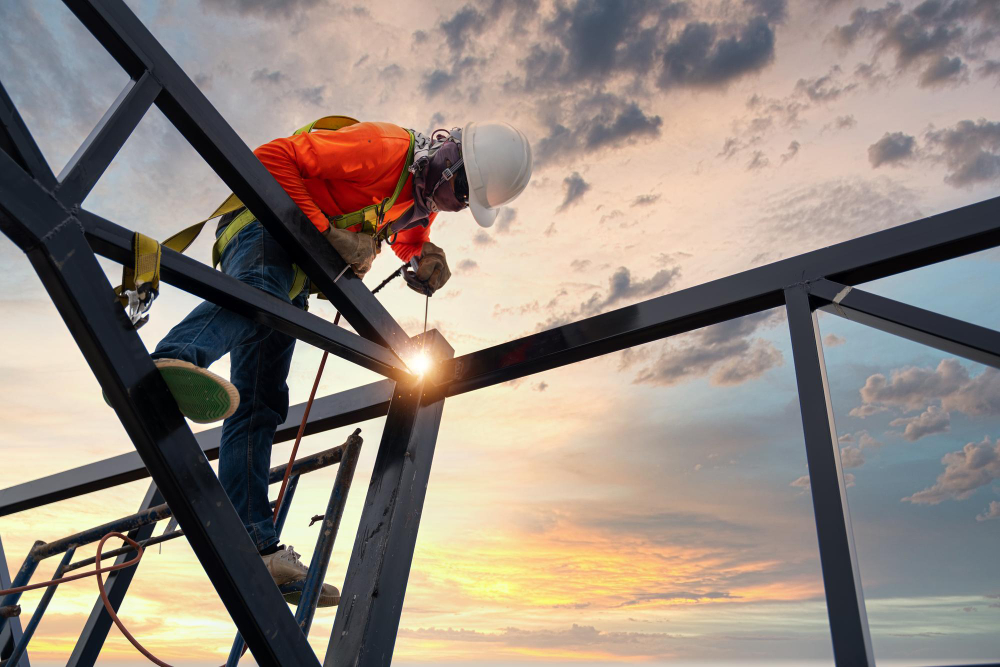Advanced Steel Fabrication Melbourne: Building the Future Today
Advanced Steel Fabrication Melbourne: Building the Future Today
Blog Article
The Ultimate Manual on Customized Steel Construction Solutions for Structural Projects
In the realm of architectural jobs, the significance of customized steel manufacture services can not be overemphasized. From the fundamental understanding of steel construction essentials to the complex process of picking one of the most suitable materials, every action in this journey plays a pivotal duty in the supreme success of a project. As we navigate with the complexities of style considerations, manufacture procedures, and quality assurance measures, a thorough handbook functions as an assisting light for experts seeking excellence in steel construction remedies. Keep tuned to reveal the understandings that can change the way structural projects are approached and executed.
Understanding Customized Steel Manufacture Essentials
Digging right into the fundamentals of personalized steel fabrication provides insight into the complex process of changing raw steel right into customized structural components. Custom steel manufacture is a customized manufacturing technique that involves cutting, shaping, and setting up steel materials to develop unique structures according to specific project demands. Comprehending the fundamentals of customized steel construction is important for making sure the successful implementation of structural projects.
The procedure generally starts with the evaluation of task specifications and style needs. This initial phase entails detailed preparation and cooperation in between engineers, makers, and developers to determine the most ideal method for producing the steel components. Accuracy is key throughout the manufacture procedure, as even minor discrepancies can affect the structural integrity of the end product.
Numerous methods, such as cutting, welding, and shaping, are used to change raw steel right into the desired structural aspects. Knowledgeable fabricators use sophisticated machinery and devices to guarantee accuracy and uniformity throughout the fabrication procedure. Quality assurance procedures are implemented to validate the stability of the produced parts before they are constructed on-site, making certain compliance with sector standards and job specs.
Picking the Right Steel Materials

First and foremost, the type of architectural project and its particular requirements play a crucial function in determining one of the most suitable steel materials. Aspects such as the load-bearing capacity, environmental conditions, and wanted life expectancy of the structure will dictate the grade and type of steel that ought to be made use of.
Moreover, the physical properties of the steel, consisting of ductility, weldability, and strength, need to align with the task's demands to guarantee optimum efficiency and resilience (Alpha reo). Furthermore, considerations such as deterioration resistance, cost-effectiveness, and availability of the steel products should likewise be considered throughout the option process
Layout Considerations for Architectural Jobs
Structural tasks require careful attention to create factors to consider to guarantee both functionality and safety are focused on throughout the construction procedure. When it pertains to developing architectural projects, several essential variables have to be taken into consideration to guarantee the success of the undertaking. Firstly, the structural honesty of the structure have to be a leading concern. This entails examining tons, stresses, and environmental factors to figure out one of the most suitable layout that can hold up against numerous problems gradually. In addition, considerations for the performance of the framework play a vital duty in the design procedure. Understanding the purpose of the building and how it will be used helps in producing a design that makes best use of effectiveness and functionality. Incorporating components that improve the appearances of the structure can even more elevate the total style. Balancing safety, webpage visual appeal, and functionality is essential in developing successful architectural jobs that fulfill both sensible and aesthetic needs. By meticulously taking into consideration these elements during the style phase, engineers and engineers can guarantee the structural project's success from perception to completion.
Streamlining Fabrication Procedures for Effectiveness

Furthermore, carrying out lean manufacturing concepts can significantly improve efficiency in steel manufacture. By lessening waste, optimizing process, and improving interaction in between different groups involved in the manufacture process, jobs can be finished more promptly and with better requirements.
Moreover, establishing an efficient production routine and process can help in focusing on jobs, assigning resources efficiently, and meeting task deadlines without delay. By having a clear plan in area and regularly checking progress, any type of possible bottlenecks or delays can be recognized and resolved without delay, guaranteeing smooth and efficient manufacture processes for architectural jobs.
Quality Control and Task Administration in Steel Manufacture
To make certain the successful execution of steel manufacture jobs, precise quality assurance procedures and efficient project administration practices are essential components in maintaining accuracy and conference customer assumptions. Quality assurance in steel construction includes rigorous evaluations at numerous phases of the fabrication process to Learn More validate compliance with project specs and market criteria. This includes material screening, dimensional checks, and weld examinations to ensure architectural integrity and safety and security.
Task monitoring plays a vital role in coordinating the various aspects of steel fabrication jobs, such as scheduling, source appropriation, and communication among team participants. A distinct task plan with clear objectives, landmarks, and timelines aids to keep an eye on development and deal with any kind of possible problems proactively. Efficient communication between all stakeholders, including clients, professionals, engineers, and producers, is important for making sure that the project advances efficiently and satisfies the preferred quality criteria.
Conclusion
In final thought, custom steel manufacture plays an important function in architectural tasks by giving tailored solutions utilizing the right materials and layout factors to consider. Efficiency in construction the original source processes, quality assurance, and effective task management are vital for effective outcomes. By understanding the essentials of customized steel fabrication and carrying out streamlined procedures, task teams can deliver premium and durable structures that meet the details needs of their clients.
Custom-made steel fabrication is a specialized production technique that entails cutting, shaping, and assembling steel products to develop one-of-a-kind structures according to details job demands.To ensure the successful implementation of steel fabrication jobs, meticulous quality control steps and efficient job administration methods are vital parts in maintaining precision and meeting client assumptions. Quality control in steel fabrication involves rigorous assessments at various phases of the manufacture procedure to validate compliance with task specs and market standards (Alpha reo).Job administration plays a critical duty in collaborating the various facets of steel manufacture jobs, such as organizing, resource appropriation, and interaction amongst team members.In final thought, custom steel manufacture plays an important role in structural projects by giving tailored services utilizing the appropriate materials and layout considerations
Report this page